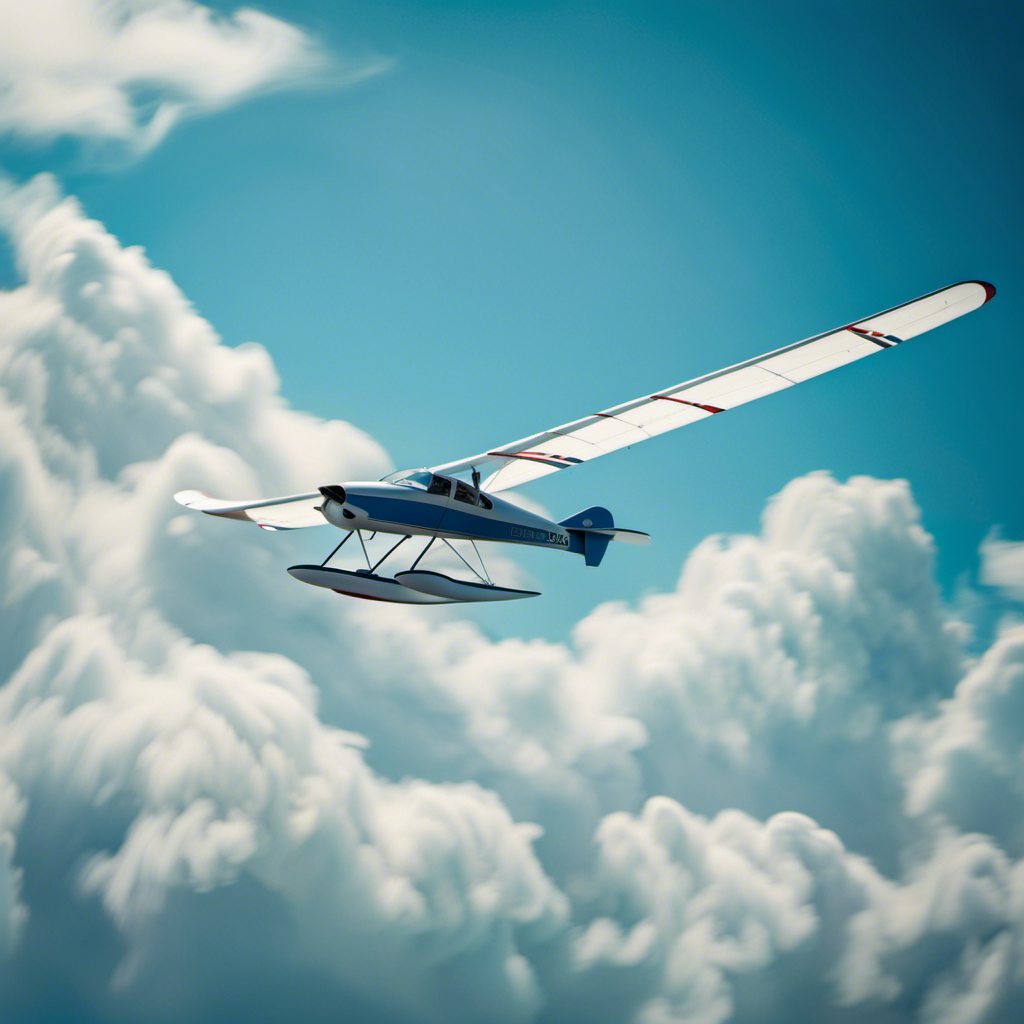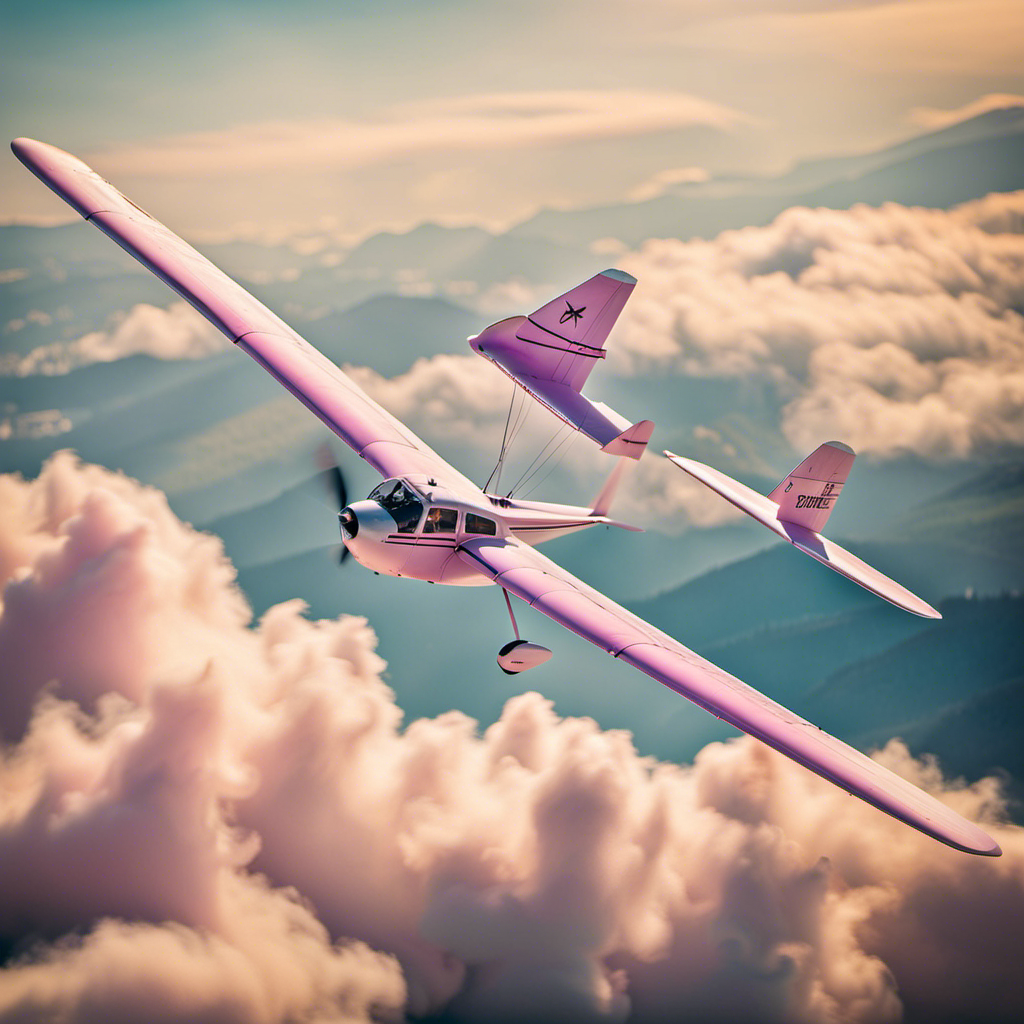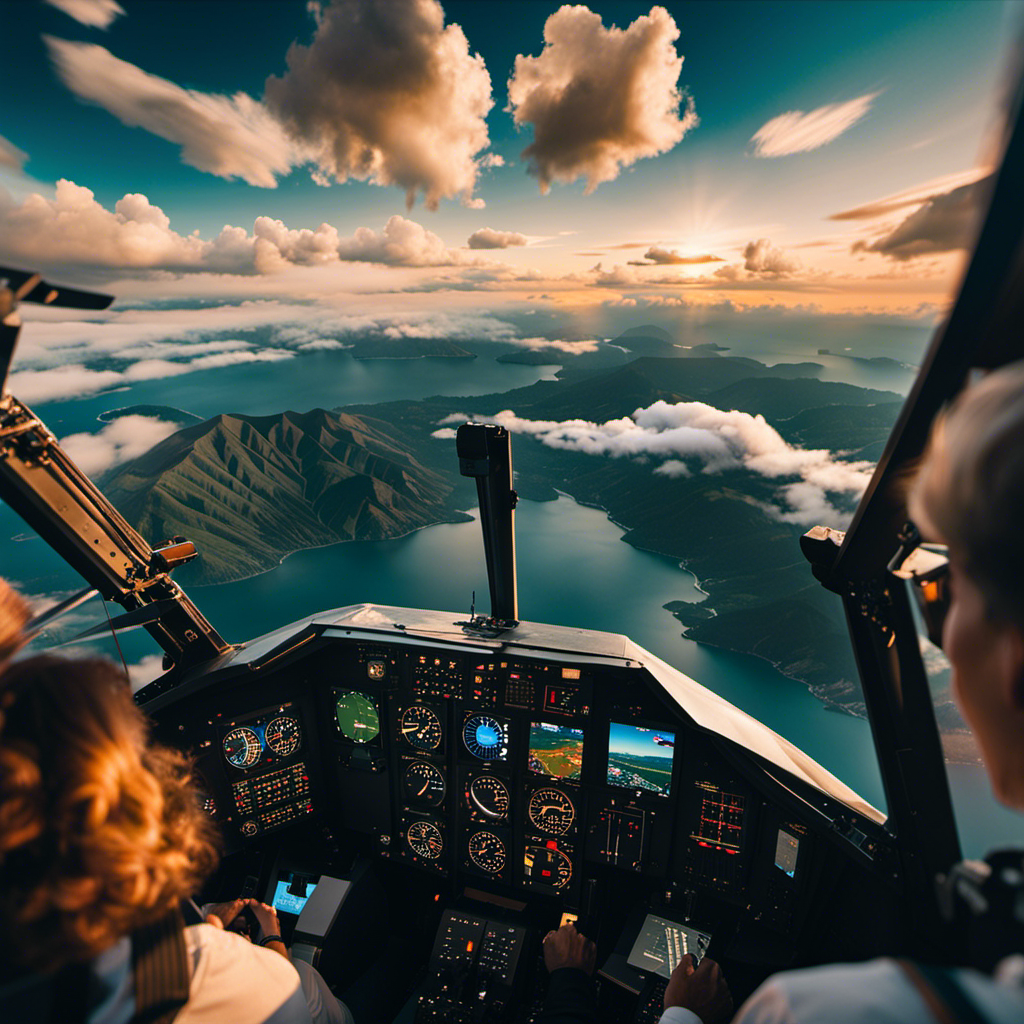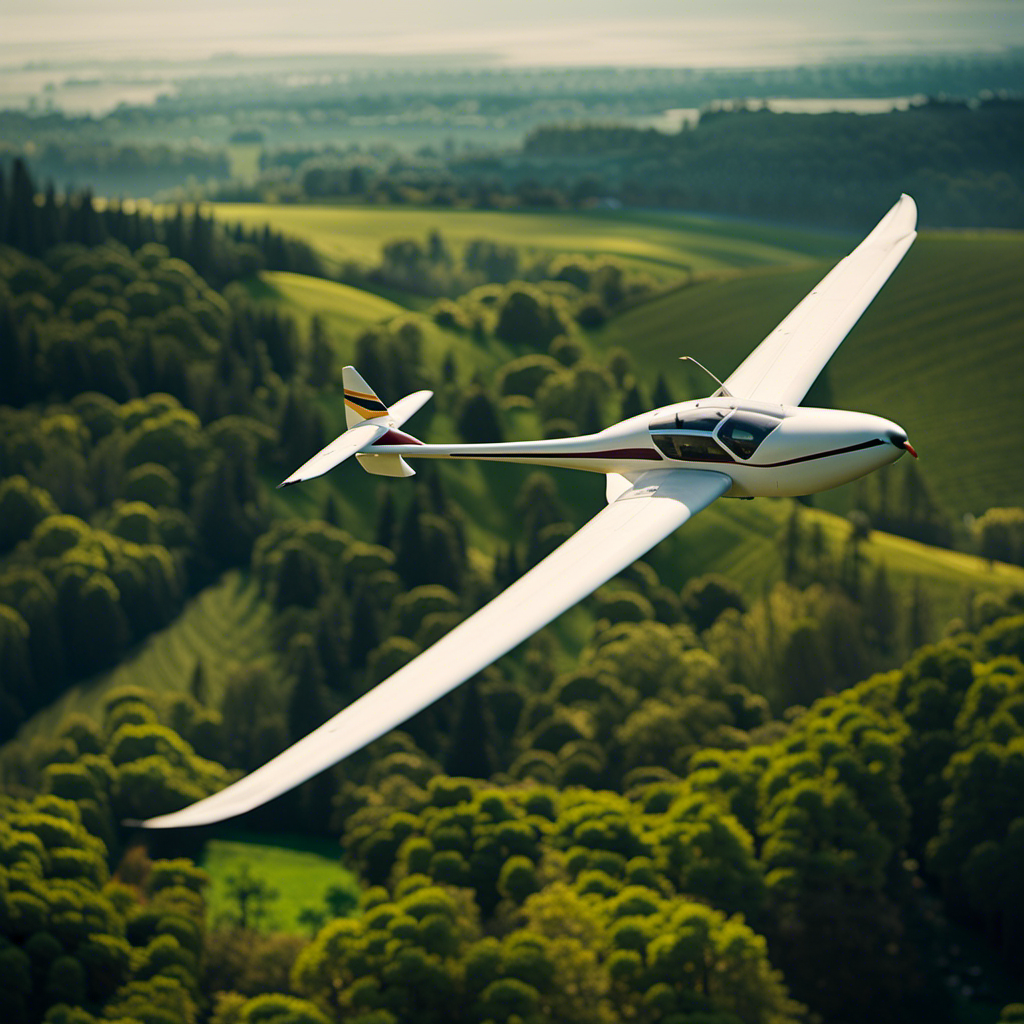Just like a bird gliding across the heavens, I yearned to feel the excitement and liberty of flying in a glider. However, accomplishing this required me to fulfill the necessary qualifications for a glider rating.
In this article, I will guide you through the process of obtaining your glider rating, from understanding the different types of ratings to finding a qualified flight instructor.
We’ll explore the age and medical requirements, completing flight hours, passing the written exam, and staying up to date with safety procedures and regulations.
Let’s embark on this exciting journey together!
Key Takeaways
- Communication protocols and safety are essential in glider flying to avoid conflicts with other aircraft and prevent accidents.
- Finding a qualified flight instructor involves researching reputable flight schools, reading reviews, and considering their experience in teaching a specific type of flying.
- Flight instructors should have the necessary qualifications, certifications, knowledge, and expertise to effectively teach and communicate with students.
- Pilots need to engage in continuing education, attend refresher courses, maintain proficiency, and fulfill recency requirements to stay current, enhance skills, and ensure safety during flights.
The Importance of Glider Ratings
You need to understand the importance of glider ratings in order to meet the requirements.
Glider ratings serve as a measure of competency and proficiency in flying gliders. They provide a standardized way to assess a pilot’s skills and knowledge, ensuring that they are capable of safely operating a glider.
Achieving a glider rating demonstrates to others, such as flight instructors and potential employers, that you have met the necessary training and experience requirements. It also allows you to participate in specific activities or fly certain types of gliders that may require a specific rating.
By obtaining and maintaining the appropriate glider rating, you are not only meeting the necessary requirements but also enhancing your credibility and ensuring the safety of yourself and others in the gliding community.
Understanding the importance of glider ratings is the first step in navigating the world of glider flying and progressing towards your goals.
Understanding the Different Types of Glider Ratings
Understanding the various types of glider ratings can be helpful in navigating the world of gliding. These ratings are a way to measure a pilot’s proficiency and experience level in different aspects of gliding. To give you a clearer understanding, here is a table summarizing the main glider ratings:
| Rating | Description |
|---|---|
| Student Pilot | The first step in becoming a glider pilot, learning the basics of flying. |
| Private Pilot | Allows pilots to fly solo and carry passengers. |
| Commercial Pilot | Enables pilots to fly for hire or compensation. |
| Flight Instructor | Allows pilots to teach and provide flight instruction to others. |
Now that you have an idea of the different types of glider ratings, let’s delve into the next section about meeting the age and medical requirements. It is important to meet these criteria to ensure safety and proficiency in gliding.
Meeting the Age and Medical Requirements
Now that we have an idea of the different types of glider ratings, let’s explore how age and medical requirements come into play.
When it comes to age, you must be at least 14 years old to obtain a student pilot glider rating. However, there is no maximum age limit for obtaining a glider rating.
As for medical requirements, a valid medical certificate is not required for operating gliders. Unlike powered aircraft, gliders do not require a medical examination. This makes gliding more accessible to individuals who may not meet the medical requirements for other types of aviation. It’s important to note that while medical certification is not mandatory, maintaining good health and physical fitness is crucial for safe glider operations.
Now, let’s move on to completing the required flight hours.
Completing the Required Flight Hours
To fulfill the necessary flight hours, I spent time soaring in gliders under the supervision of a qualified flight instructor. It was an exciting and challenging experience that allowed me to hone my flying skills and gain valuable knowledge.
Here are some key points about completing the required flight hours:
- Gliding provides a unique opportunity to learn about aerodynamics and aircraft control.
- Flying in a glider allows pilots to develop their decision-making skills in a dynamic and unpredictable environment.
- The hours logged in gliders count towards the total flight time required for obtaining a glider rating.
- Glider flights are a cost-effective way to accumulate flight hours compared to flying powered aircraft.
After completing the required flight hours, the next step is to pass the written exam, which tests knowledge on topics such as airspace regulations, meteorology, and navigation.
Passing the Written Exam
Passing the written exam requires studying and demonstrating knowledge of important topics like airspace regulations, meteorology, and navigation. It is crucial to thoroughly understand these subjects as they form the foundation of safe and efficient glider operations.
The exam covers a wide range of concepts, including understanding different types of airspace and their associated regulations, interpreting weather reports and forecasts, and planning routes using navigation aids. Additionally, one must be familiar with glider performance characteristics, emergency procedures, and the principles of flight.
Achieving a passing score on the written exam is an essential step towards obtaining a glider rating. It serves as a demonstration of theoretical knowledge and prepares pilots for the next phase of the process: demonstrating practical skills in the flight test.
Demonstrating Practical Skills in the Flight Test
Demonstrating practical skills in the flight test is a crucial step towards obtaining a glider rating. During the flight test, I must showcase my ability to safely operate a glider and execute various maneuvers with precision. Here are three key aspects that I need to excel in:
-
Takeoff and landing techniques: I must demonstrate proficient control while smoothly taking off and landing the glider, showing precision in aligning with the runway and maintaining proper airspeed.
-
In-flight maneuvers: This includes performing turns, climbs, and descents while maintaining a coordinated flight. It is essential to demonstrate the ability to handle different wind conditions and maintain accurate altitude control.
-
Emergency procedures: I need to showcase my knowledge and ability to respond effectively to emergency situations such as simulated rope breaks or stall recovery, ensuring the safety of myself and the glider.
Mastering these practical skills is essential to obtain a glider rating. However, understanding the safety procedures and regulations is equally important for a successful flight test.
Understanding the Safety Procedures and Regulations
Understanding the safety procedures and regulations is crucial for ensuring a safe and successful flight test, as well as maintaining the overall safety of yourself and the glider. Before taking to the skies, it is important to familiarize yourself with the specific safety protocols and regulations that apply to glider flying.
This includes understanding emergency procedures, such as how to handle equipment malfunctions or unexpected weather conditions. Additionally, knowing the airspace restrictions and communication protocols is essential for avoiding potential conflicts with other aircraft.
Finding a Qualified Flight Instructor
To find a qualified flight instructor, you’ll want to start by researching reputable flight schools and reading reviews from other students. Look for instructors who have a good reputation and are experienced in teaching the specific type of flying you want to learn.
It’s important to find someone who is knowledgeable, patient, and can effectively communicate with you. Consider reaching out to the flight schools and scheduling a meeting or trial lesson to get a sense of their teaching style and approach. Additionally, ask about their qualifications, certifications, and experience in the industry.
Once you find the right instructor, it’s crucial to keep up with continuing education and recency requirements to ensure you stay current and maintain your skills as a pilot. This involves staying up to date with changes in regulations, attending refresher courses, and logging sufficient flight hours.
Keeping Up with Continuing Education and Recency Requirements
Make sure you stay current and maintain your skills as a pilot by regularly attending refresher courses, staying updated with changes in regulations, and logging sufficient flight hours. Continuing education and recency requirements are essential to ensuring that you are up to date with the latest techniques and regulations in glider flying. By participating in refresher courses, you can refresh your knowledge and skills, allowing you to stay sharp and confident in the cockpit. Additionally, staying updated with changes in regulations is crucial to ensure that you are following the most current safety guidelines. Logging sufficient flight hours is equally important, as it allows you to practice and reinforce your skills. By adhering to these requirements, you can enhance your proficiency as a glider pilot and ensure the safety of your flights.
| Requirements | Importance | Benefits |
|---|---|---|
| Refresher courses | Essential | Refresh knowledge and skills |
| Staying updated with changes in regulations | Crucial | Follow current safety guidelines |
| Logging sufficient flight hours | Equally important | Practice and reinforce skills |
As you meet these requirements, you will be well-prepared to celebrate your accomplishment and enjoy the world of glider flying.
Celebrating Your Accomplishment and Enjoying the World of Glider Flying
Once you’ve met all the necessary requirements, you can celebrate your accomplishment and fully enjoy the world of glider flying. Becoming a certified glider pilot is a significant achievement that opens up a whole new realm of possibilities.
You can now soar through the skies, experiencing the freedom and exhilaration that only glider flying can offer. Take the time to reflect on your hard work and dedication that got you here. Celebrate with your fellow pilots, friends, and family. Plan a special flight to mark this milestone and make memories that will last a lifetime.
As you embark on your glider flying journey, remember to always prioritize safety and continue to learn and grow as a pilot. Embrace the adventure and enjoy every moment of this incredible sport.
Frequently Asked Questions
How long is the written exam for glider ratings?
The written exam for glider ratings typically takes around two to three hours. It covers various topics such as aerodynamics, regulations, weather, navigation, and safety procedures to ensure pilots have a comprehensive understanding of flying gliders.
Can I complete the required flight hours in a powered aircraft?
Yes, the required flight hours for glider ratings can be completed in a powered aircraft. However, it is important to meet all the other rating requirements as well.
What are the safety procedures and regulations that I need to be aware of?
To ensure safety while meeting glider rating requirements, I must adhere to established procedures and regulations. This includes thorough pre-flight inspections, maintaining proper communication, following airspace rules, and being aware of emergency protocols.
How do I find a qualified flight instructor for glider ratings?
To find a qualified flight instructor for glider ratings, I would start by researching flight schools or clubs that offer glider training. Then, I would look for instructors who are experienced, certified, and have positive reviews from previous students.
What are the continuing education and recency requirements for maintaining glider ratings?
To maintain glider ratings, I must complete a minimum of three flight hours and five solo flights in the past 90 days. Additionally, I need to complete a flight review every two years.
Conclusion
In conclusion, obtaining glider ratings is a rigorous process that requires dedication and commitment. However, the rewards are well worth it.
Just like a soaring eagle, achieving these ratings allows you to soar to new heights and experience the thrill of glider flying.
So, spread your wings and embrace the world of glider flying with the knowledge and confidence that comes from meeting all the requirements.
Happy flying!









